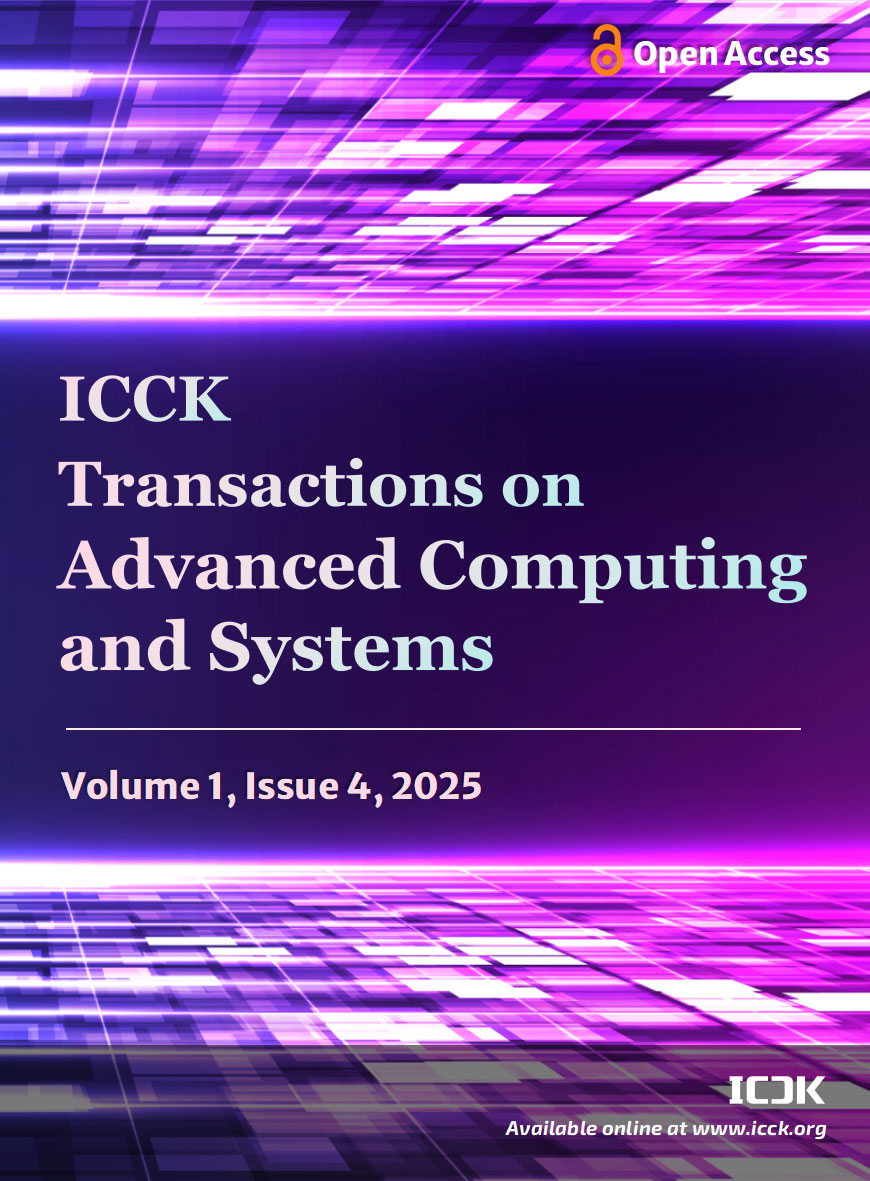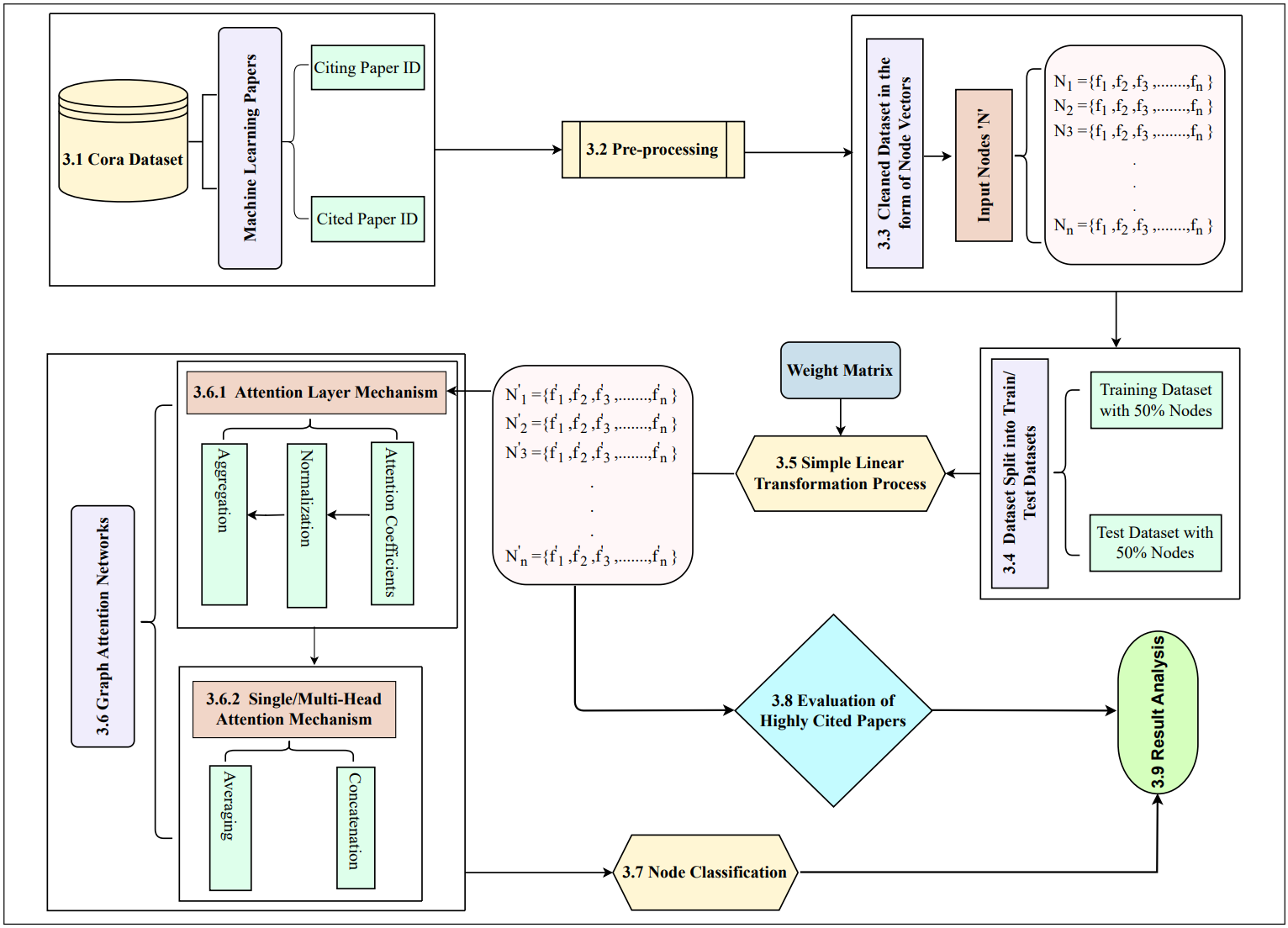Abstract
The growing role of citation relations in identifying research impact has spurred much investigation on assessing the most cited papers and their roles within datasets. Due to the richness of the CORA dataset, this study selects highly cited papers and measures the results of node classification, as well as the H-index of research articles. Besides, it explores the correlations and robustness with regard to the nodes by computing their chances and studying their connections. To these ends, linear transformation was utilized for mapping low-level node features to high-level, and the Graph Attention Networks (GAT) for node classification. The study was able to find highly cited papers and compute their H-index, which gives insight into the citation patterns in the CORA dataset. For instance, Paper ID 12182 reported an H-index of 20, while a high citation paper index of 35 received 166 citations. On the test dataset, the study achieved a node classification accuracy ranging from 78.6% to 82% and an F1 score of 78.14%. Furthermore, 7 nodes of the machine learning domain have also been distinguished and categorized according to their features and their relations within the graph. In the citation network identified, the present research detailed the citation interconnection that characterized the works within the dataset. Our research mainly focuses on new tasks such as the extraction of highly cited papers and the calculation of the H index that improve the comprehension of the scholarly influence and the citation relation for future development strategies in citation network analysis.
Data Availability Statement
The code supporting the findings of this study is openly available on GitHub at https://github.com/TahirSher/Graph-Attention-Networks-for-Node-Classification-and-Highly-Cited-Papers. All experiments were conducted using Google Colab with Python~3.10 and standard library versions compatible with Python~3.10.
Funding
This work was supported without any funding.
Conflicts of Interest
The authors declare no conflicts of interest.
Ethical Approval and Consent to Participate
Not applicable.
Cite This Article
APA Style
Sher, T., Rehman, A., & Ihsan, I. (2025). Transforming Citation Networks into Insights: Mapping Scholarly Influence with Advanced Graph Models. ICCK Transactions on Advanced Computing and Systems, 1(4), 238–257. https://doi.org/10.62762/TACS.2025.939169
Publisher's Note
ICCK stays neutral with regard to jurisdictional claims in published maps and institutional affiliations.
Rights and Permissions

Copyright © 2025 by the Author(s). Published by Institute of Central Computation and Knowledge. This article is an open access article distributed under the terms and conditions of the Creative Commons Attribution (CC BY) license (
https://creativecommons.org/licenses/by/4.0/), which permits use, sharing, adaptation, distribution and reproduction in any medium or format, as long as you give appropriate credit to the original author(s) and the source, provide a link to the Creative Commons licence, and indicate if changes were made.


 Submit Manuscript
Edit a Special Issue
Submit Manuscript
Edit a Special Issue

 Copyright © 2025 by the Author(s). Published by Institute of Central Computation and Knowledge. This article is an open access article distributed under the terms and conditions of the Creative Commons Attribution (CC BY) license (https://creativecommons.org/licenses/by/4.0/), which permits use, sharing, adaptation, distribution and reproduction in any medium or format, as long as you give appropriate credit to the original author(s) and the source, provide a link to the Creative Commons licence, and indicate if changes were made.
Copyright © 2025 by the Author(s). Published by Institute of Central Computation and Knowledge. This article is an open access article distributed under the terms and conditions of the Creative Commons Attribution (CC BY) license (https://creativecommons.org/licenses/by/4.0/), which permits use, sharing, adaptation, distribution and reproduction in any medium or format, as long as you give appropriate credit to the original author(s) and the source, provide a link to the Creative Commons licence, and indicate if changes were made. 
